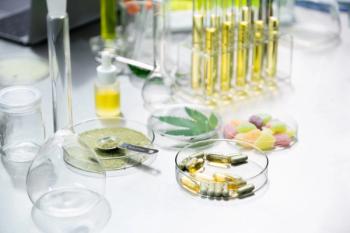
Cannabis Science and Technology
- May/June 2019
- Volume 2
- Issue 3
Inter-Lab Variation in the Cannabis Industry, Part II: Solutions

Cannabis laboratories can get different results on identical samples. In this article, the author explains solutions to those problems.
In the first installment of this two-part series, I discussed the problem of inter-laboratory variation in the cannabis testing industry. In this second installment, I offer potential solutions to the problem. These include more and better state oversight, proper sample storage, industry agreement on standard methods, and orthogonal testing. Despite its prevalence, I believe the inter-laboratory variation problem is solvable.
It is hard to believe that we are already up to the fifth installment of this column. To review, the previous columns introduced the scope and purpose of the series (1), discussed error, precision, and accuracy (2), covered the problem of inhomogeneous samples (3), and in the last column I shared with the industry my thoughts on the problem of inter-laboratory variation and its causes (4). Here is that list of the causes as I see them:
- Lack of standard methods
- Sample inhomogeneity
- Lack of appropriate standards
- Sample preparation variability
- Sample instability
- Large factor dilutions
- Treating analytical methods as intellectual property
- Human error
It’s a long list and the cause of a complex and knotty problem. I have been a practicing analytical chemist for four decades, and been intimately involved in cannabis analysis since 2014, when it was first legal to do so. Therefore, I believe I am uniquely qualified to take a step back, analyze the problems of the cannabis analysis industry, and suggest solutions. I do this not out of malice but love. The newly opened field of cannabis science is like an unexplored continent, where every day fascinating new discoveries are being made that might benefit mankind. For those discoveries to bear fruit, the industry must be based on science and professionalism. These solutions then are offered in the hope of making a small contribution to this goal. Each solution detailed below will address one or more of the causes of the inter-laboratory variation problem discussed in the last column.
Potential Solutions
The ultimate solution to many of the causes of the cannabis laboratory inter-laboratory variation problem is legalization of marijuana at the federal level in the United States. This would allow cannabis scientists to come out from the shadows, pursue all research avenues, and feel free to share their work. It would allow the U.S. Food and Drug Administration (FDA) to become involved in the regulation of the manufacturing and analysis of cannabis medicines, and it would give a green light to the National Institute of Standards and Technology (NIST) to issue appropriate cannabis standard reference materials (SRM).
However, until that happy day comes, we as an industry will have to struggle with and try to solve this problem on our own. I believe that if we can make progress it will raise public confidence in our ability to make safe and effective medicines, increasing the likelihood of expanded legalization. Meanwhile, here are steps we can take now to start solving the problem.
Improved State Oversight
As of now it is state governments that bear the brunt of regulating the cannabis industry. The fact that the inter-laboratory variation problem exists in multiple states means that no one state government has completely figured out how to regulate cannabis testing properly. Wouldn’t it be great if state regulators and cannabis scientists from around the country got together, harmonized regulations, and agreed on best practices for cannabis analysis? In the absence of federal oversight, it would go a long way towards solving this problem. Until then, individual states could begin by choosing a “golden laboratory” within the state whose methods are trusted enough that it would be the go-to laboratory for any questions about samples analyzed elsewhere. As I have pointed out previously (4), the lack of SRMS in our industry means that true accuracy, or knowing how far away you are from the true value, is impossible to achieve. In this absence, it makes sense to pick a laboratory whose instrument, personnel, and method have been properly vetted and trusted enough to put a stake in a ground and be the “true value” that all other laboratories in a state must compare their results to. Alternatively, state regulators could be more specific in their regulations, calling out specific extraction methods for example that are used industry-wide and known to work.
State personnel should also perform blind round-robin studies, similar to those already published in the literature (5-7), by sending the same sample to multiple labs, tabulating and comparing the results, and publishing them so the public knows who is and who isn’t doing a good job. To be clear, the inter-laboratory variation problem has been observed with cannabis laboratories that are state and International Organization for Standardization (ISO) licensed and certified (5).
This means these certifications by themselves are not sufficient to ensure every laboratory in a state gets similar results on the same sample. This indicates that state governments need to step up their game to solve this problem.
Industry Organizations Need to Speed Up Their Work
At the moment the United States Pharmacopeia (USP), the Association of Official Analytical Chemists (AOAC), and the American Society for Testing and Materials (ASTM) all have committees working on cannabis method and materials standardization. Like anything run by volunteers, progress is steady but can be slow. I would urge these organizations to speed up their process given the danger that the inter-laboratory variation problem poses to our industry and public health. If everyone reading this article volunteered for one of these organizations, the problem will be solved sooner.
Representative Sampling
Briefly, given the inhomogeneity of cannabis samples, particularly plant material, the taking of one aliquot, testing it, and reporting out one set of results is inappropriate. Statisticians tells us that the best way to overcome inhomogeneity is to test multiple aliquots and average the results (3).
I realize that testing multiple aliquots is time-consuming and expensive, but it is the only way to obtain representative data on our samples and begin to chip away at the problem of inter-laboratory variation.
Perhaps state regulators can step in here and require more than one aliquot of each sample be tested, particularly for failed samples or samples close to action limits. Also, laboratories need to consider methods other than chromatography such as infrared spectroscopy (7) that are faster, cheaper, easier, and more readily lend themselves to analyzing multiple aliquots.
Analyzing Samples Quickly
Work in the literature shows that cannabis samples are unstable, some with half-life of just eight months (8-12). Thus, these samples should be analyzed as soon as possible after collection. This means cannabis laboratory clients need to rush samples to the laboratory, and laboratories need to turn around samples as quickly as possible. I realize many laboratories may be swamped with samples, and five-day or even seven-day turn-around times may be common. But this needs to be the exception rather than the rule. The industry needs to invest in the personnel and equipment to speed up analyses so samples are analyzed while they are fresh.
Proper Sample Storage
Since we know cannabis samples are unstable, and until we have further data on ideal storage conditions, all samples collected should be stored in a refrigerator in the dark until they are needed for analysis. State regulators should insist upon this.
Orthogonal Testing
Orthogonal testing means using a second analytical method as a referee for a primary method. For example, it has been shown that mid-infrared spectroscopy can accurately determine cannabinoid and terpene profiles in cannabis distillates and extracts (5,12,13). Side-by-side studies on the same sample set can be used as a sanity check on high-performance liquid chromatography (HPLC) potency methods. If the HPLC suddenly starts disagreeing with the second method, it may indicate that some undetected change in the HPLC method has occurred that needs to be investigated. Some laboratories are already doing this (14).
More and Better Training
At the end of the day our analyses are only as good as the quality of the people performing them. The existence of the inter-laboratory variability problem and my own observations and experience prove to me that we as an industry need to improve the quality of our analysts. This means cannabis laboratories need to invest more time in training their current employees, and hire employees with appropriate degree levels and experience.
To draw the analogy to the pharmaceutical industry, laboratory managers and directors there typically have graduate degrees in analytical chemistry and many years of experience. Given that cannabis is medicine and should be tested like medicine, I strongly feel that laboratory managers and directors in the cannabis industry should have a graduate degree in analytical chemistry and significant experience. Technicians should have appropriate degrees and extensive on-the-job training.
This is another place where state regulators can step up, requiring continuing education for current laboratory employees, and insisting new hires have appropriate educational levels and experiences.
Conclusions
The inter-laboratory variation problem in the cannabis analysis industry is real and threatens the health and safety of consumers and the future of our industry. It has a number of causes, including a lack of standard methods and reference materials. These problems are exacerbated by the lack of marijuana legality at the federal level in the United States. However, there are things the cannabis industry can do now of its own accord to ameliorate the problem including agreeing on standard methods, representative sampling, proper sample storage, orthogonal testing, and more and better training of laboratory personnel. Only if we as an industry acknowledge this problem and begin working on solutions now will our desired goal of widespread legalization ever occur.
References:
- B.C. Smith, Cannabis Science and Technology 1(3),10-12 (2018).
- B.C. Smith, Cannabis Science and Technology 1(4),12-16 (2018).
- B.C. Smith, Cannabis Science and Technology 2(1),14-19 (2019).
- B.C. Smith, Cannabis Science and Technology 2(2), 12-17 (2019).
- B.C. Smith, P. Lessard, and R. Pearson, Cannabis Science and Technology 2(1), 48-53 (2019).
- B. Young, The Seattle Times
https://www.seattletimes.com/seattle-news/marijuana/some-pot-labs-in-state-failed-no-pot-at-all-says-scientist/ . January 5, 2016. https://www.nbcbayarea.com/investigations/Industry-Insiders-Warn-of-Fraud-at-Marijuana-Testing-Labs-458125743.html?_osource=SocialFlowFB_BAYBrand .(2017).- M. Starks, Marijuana Chemistry (Ronin Publishing, Oakland CA, 1977).
- J. Fairbairn, J. Liebmann, and M. Rowan, Journal of Pharmacy and Pharmcacology, 28(1) (1976).
- I. Trofin, G. Dabija, D. Vaireanu, and L. Filipescu, Revista de Chimie (Bucharest), 63(293) (2012).
- C. Lindholst, Australian Journal of Forensic Sciences 42(181) (2010).
- B.C. Smith, Terpenes and Testing, Nov.-Dec. pg. 48 (2017).
- B.C. Smith, Terpenes and Testing, Jan.-Feb. pg. 32 (2018).
- J. Strull, private communications.
Brian C. Smith, PhD, is Founder, CEO and Chief Technical Officer of Big Sur Scientific in Capitola, California. Dr. Smith has more than 40 years of experience as an industrial analytical chemist having worked for such companies as Xeros, IBM, Waters Associates, and Princeton Instruments. For 20 years he ran Spectros Associates, an analytical chemistry training and consulting firm where he improved their chemical analyses. Dr. Smith has written three books on infrared spectroscopy, and earned a PhD in physical chemistry from Dartmouth College.
How to Cite This Article
B.C. Smith, Cannabis Science and Technology 2(3), 10-14 (2019)
Articles in this issue
over 6 years ago
How ERP Solutions Support Accountability in Cannabis Businessesover 6 years ago
Regulation Nationover 6 years ago
Beyond Potency: The Importance of Terpenesover 6 years ago
Understanding the Science of Cannabis Product DevelopmentNewsletter
Unlock the latest breakthroughs in cannabis science—subscribe now to get expert insights, research, and industry updates delivered to your inbox.



